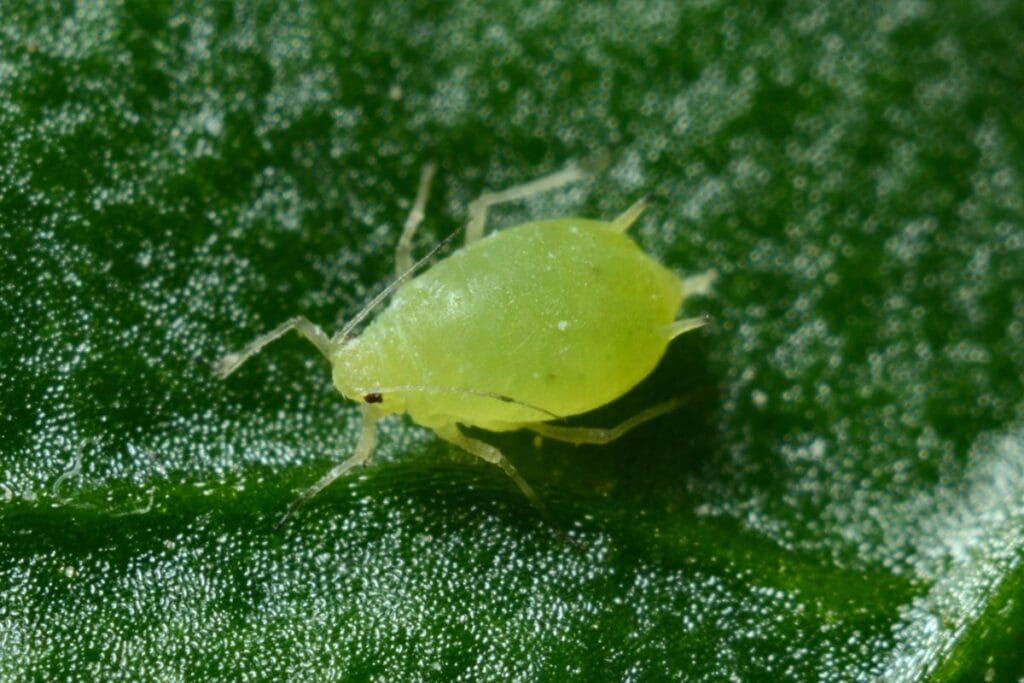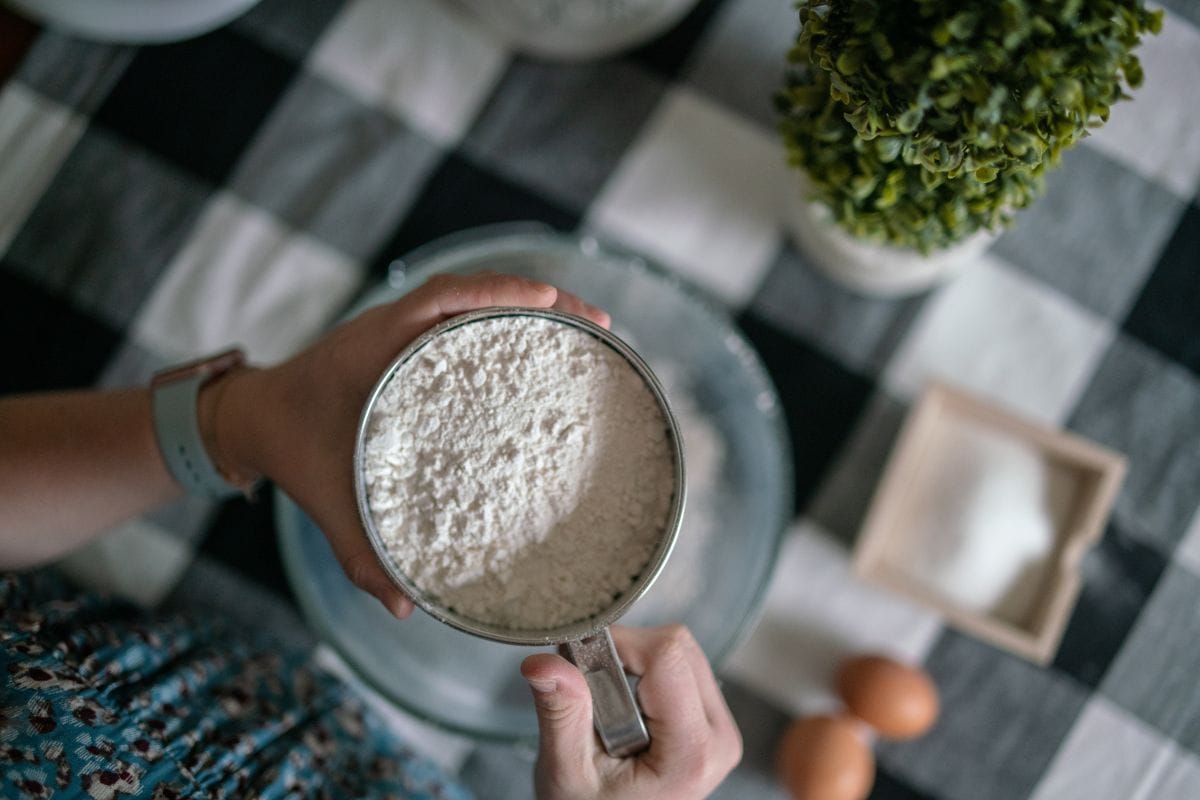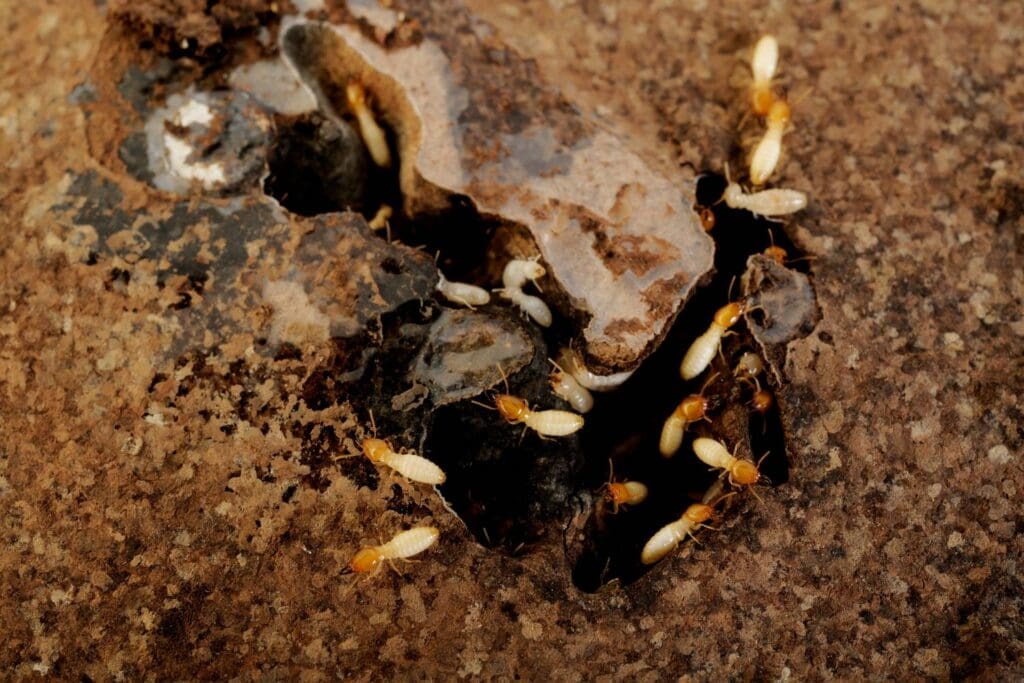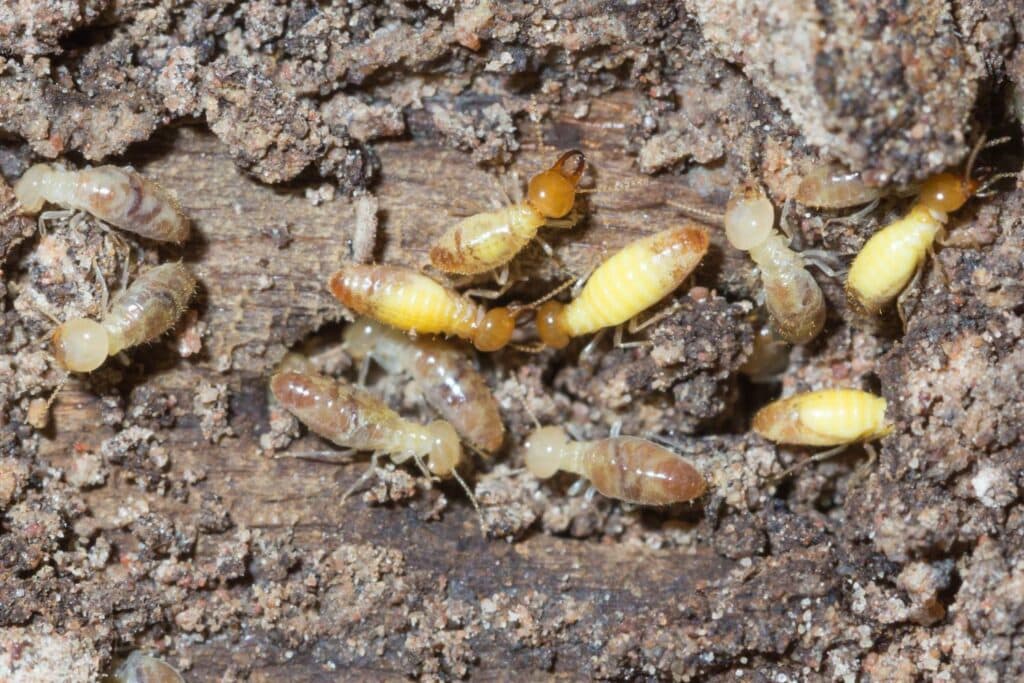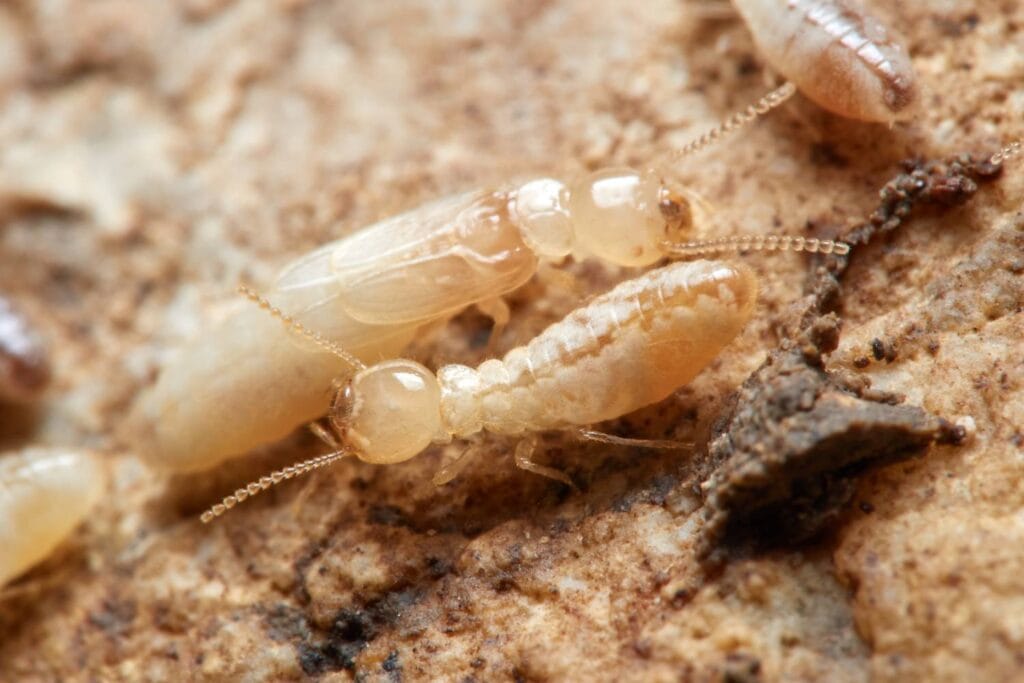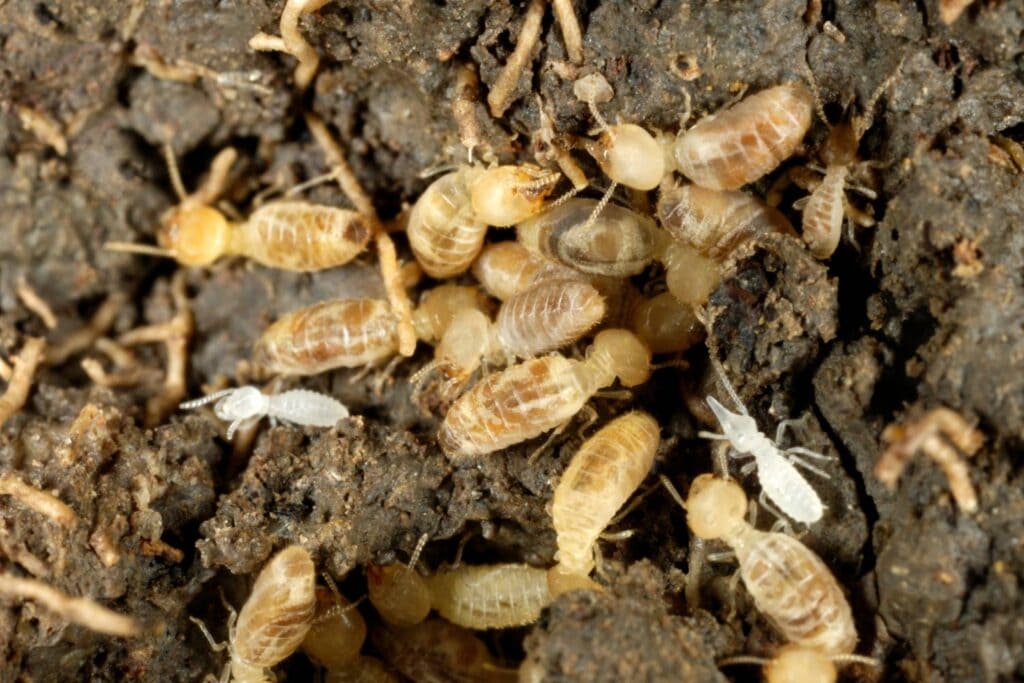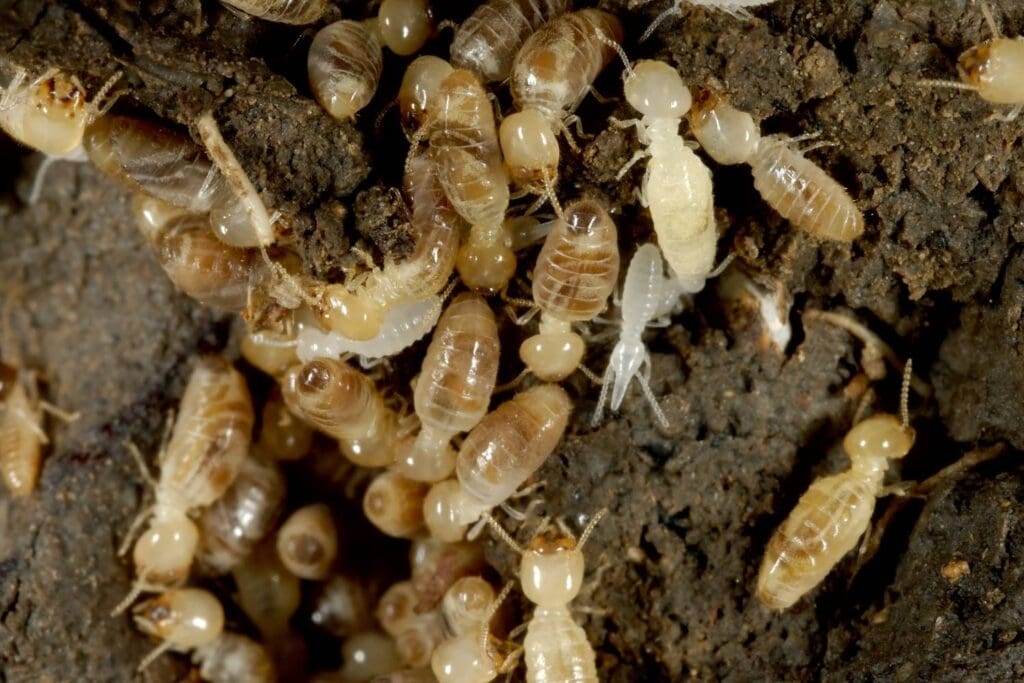Microscopic animals called dust mites inhabit the dust and strands of fabric in our homes. Even though we can't see them, they seriously threaten our health. These annoying bugs are a major factor in developing allergic reactions, asthma attacks, eczema, and other skin disorders. In addition, dust mites can multiply quickly in warm, humid conditions in our beds, carpets, and furniture.
But have no dread! There are measures you may take to protect your family from the dangers posed by these little pests. In this piece, we'll delve into the fascinating world of dust mites, discuss the damage they can do to our bodies, and then discuss some easy ways to eliminate them from your house. Finally, prepare to reclaim control of your home from this unseen foe so you can finally relax.
If you don't get rid of Dust Mites in the early stages, they can damage your home greatly. All Pests is a reliable pest control service that can assist you in getting rid of these unwanted visitors in a timely and cost-effective manner.
What Do Dust Mites Look Like?
Arachnids, which include dust mites, also include spiders, scorpions, and ticks. They have eight legs, making them anything but insects. Insects only have 6. There are primarily two species:
- The European house dust mite (Dermatophagoides pteronyssinus)
- The American house dust mite (Dermatophagoides farinae)
Their names may imply otherwise but are not unique to Europe or North America. They populate a wide range of countries around the globe. The European dust mite is the species most commonly seen in Australian homes.
However, the widespread belief that dust mites are parasitic is a common fallacy. This is not the case. They aren't venomous, don't cause serious injuries from bites or stings, and don't burrow into the skin. The only significant problem is that they multiply rapidly in warm, damp environments.
When their numbers grow rapidly, so does the garbage they produce. Allergy sufferers are affected by these waste products and the mould that forms on them.
Where Can I Find Dust Mites?
Dust mites are filth eaters that eat decaying organic material. That's why they favour areas with plenty of people and pets, where they can feast on our shed skin and fur. Since they thrive in humid and warm environments, it's not surprising to discover them in abundance in places like beds, pillows, and bedding. They can also be found in carpeting, upholstery, and drapery.
A standard mattress may be home to anywhere from one million to ten million dust mites, depending on how long it has been around. Because of this, keeping your mattress clean regularly is crucial. Just think of all the rubbish the crowd would produce and how many allergies it would cause. Considering that during its 80-day lifespan, a single beetle will excrete around a thousand waste particles.
Allergies Caused by Dust Mites.
Although it is not nice to consider the possibility that your bedding is home to millions of dust mites. As we mentioned before, dust mites in and of themselves pose no health risks. Allergy sufferers have difficulty breathing because of the fungus that thrives on their waste. Allergies to dust mites typically manifest as:
- Runny nose
- Itchy, Watery eyes
- Sneezing
- Coughing
- Eczema and skin rashes (especially in infants)
- Hay fever
- Asthma and shortage of breath
- Nasal congestion
- Allergic Rhinitis
- Itchy nose or throat
- Sinusitis
The number of allergies thought to be caused by dust mite allergens is rather long. This is why reducing the number of dust mites in the environment is crucial. A trip to the doctor is in order if you experience any of these issues. If you wanna know if you are allergic to dust mites, they can do a skin prick and blood test.
Due to their rapid reproductive rate and enormous egg production, dust mites can only partially be eliminated, however, if standard cleaning procedures and dust mite control measures are implemented. In addition, allergens have less of an impact if people take precautions.
How Can You Tell If You Have Dust Mites?
The microscopic size of dust mites makes them impossible to see with the human eye. Only under a microscope can you make out the little white insects that scurry about. But, even if you can't see them, there are techniques to determine if they've broken into your house. We've compiled a list of the most frequent ones:
Your Allergy Symptoms Have Apparent Origins
Dust mite allergies cause various uncomfortable symptoms, including coughing, wheezing, difficulty breathing, a tight chest, a runny or itchy nose, itchy or watery eyes, itchy skin, and rashes.
Kits for Detecting Dust Mites at Home
Allergens like dust mites can be detected using a simple at-home test kit. These kits are cheap and relatively easy to put to use.
A Professional Inspection
The easiest approach to determine if dust mites are present in your home is to have a professional pest controller inspect it.
How Do I Completely Eliminate Dust Mites?
Now that we've discussed determining if dust mites are present, we can move on to the more pressing issue: getting rid of them. We've compiled a list of the most effective home and professional dust mite treatments:
Sprinkle Some Diatomaceous Earth
Natural and fine, diatomaceous earth is ground up of silica rocks. It is a safe and effective natural remedy for eliminating dust mites. To get rid of dust mites, sprinkle some of the powder on your beds, pet beds, furniture, carpets, and other locations where they might be hiding, leave it there for a few hours or overnight, and then vacuum the area well. Many people prefer this natural dust mite killer because it is harmless to humans and animals.
Use Borax
Borax is an effective natural solution for eliminating dust mites from carpets and other surfaces around the home. Carpets, couches, and mattresses can all benefit from a light dusting of the powder, which should be left to sit for a few hours before being vacuumed properly. Washing your linens and blankets with half a cup of borax is another effective method of eliminating dust mites. These procedures will permanently eliminate dust mites.
Please Consider Baking Soda
Among the most useful household items is baking soda. As a bonus, baking soda can kill insects like dust mites and remove stains and odours. Putting it to use is a breeze. Use baking soda like you would borax:
- Sprinkle it on the affected areas (especially the furniture and carpet).
- Leave it alone for a while, preferably the night.
- Vacuum it up.
This dust mite treatment will render your home insect-free.
Buy Some Tea Tree Oil
Aside from killing dust mites naturally, tea tree oil also gives a pleasant aroma. Adding 5 or 6 drops of oil to your regular detergent can help remove dust mites in your clothes. Make a spray around the house by combining 1 cup of water and two tablespoons of tea tree oil in a spray bottle, giving it a good shake, and then spraying the mixture as needed. Your furniture, bedding, floor coverings, window treatments, and more could all be at risk from an army of dust mites.
Try Steam Cleaning
Dust mites can be effectively removed with a steam cleaning. Dust mites cannot survive in such a hot environment. Therefore your home will be clean and free of allergens. You can also buy chemicals designed specifically for eliminating dust mites and add them to the machine before cleaning.
Carpets, drapes, beds, and upholstered furniture should be your primary targets while employing the steam cleaner. Of course, you may always hire a professional steam cleaning service if you feel like doing it yourself or need the right tools.
Select Exposure at Low Temperatures
Freezing dust mites is an intriguing alternative way of control. Because they dislike frigid temperatures, dust mites, like woodworms and other pests, are easily eradicated when exposed. But exactly does one freeze an item already plagued with dust mites? No sweat; pop it in the fridge. This technique works wonderfully for things like toys for kids and animals. All the pests can be killed by placing the goods in a plastic bag, ensuring it is sealed, and then placing it in the refrigerator overnight.
Invest In Commercial Products
The commercial approach comes last on our list and for good reason. Acaricides, insecticides that kill ticks and mites, and anti-allergenic solutions are always options. Still, it's important to remember that, like many over-the-counter pest eradication items, they may not be as efficient as you'd want. To get rid of dust mites quickly and effectively, it's best to use a professional service. Most exterminators have access to effective insecticides that will rid your home of dust mites in just one treatment.
How To Treat Dust Mite Allergies?
Avoiding dust as much as possible is the first step in treating dust mite allergies. Fewer or milder allergic reactions are expected when exposure to dust mites is reduced. It is, however, impossible to rid your home of dust mites. Medications to alleviate symptoms may also be required.
Medication for allergies
One or more of the following drugs may be prescribed by your doctor to alleviate nasal allergy symptoms:
Antihistamines
When an individual is exposed to an allergen, their immune system responds by releasing histamine, which triggers symptoms such as sneezing, itching, and a runny nose.
Antihistamines work by blocking the effects of histamine, resulting in reduced allergy symptoms. Antihistamine medications are available in different forms, including tablets, syrups, and nasal sprays.
Children can take antihistamine syrups, while adults can take antihistamine tablets such as Allegra Allergy, Alavert, Claritin, Zyrtec, and others. Azelastine and olopatadine are examples of prescription antihistamines that can be used as nasal sprays. These medications are effective in alleviating allergy symptoms such as itching, sneezing, and runny nose.
Corticosteroids
Reducing inflammation and alleviating hay fever symptoms can be achieved with nasal sprays that contain corticosteroids. Several examples of these medications are available, such as mometasone furoate (Nasonex), ciclesonide (Omnaris), triamcinolone (Nasacort Allergy 24HR), and fluticasone propionate (Flonase Allergy Relief), which includes a decongestant. Unlike oral corticosteroids, the nasal administration of these medications provides a much lower dosage and reduces the risk of side effects.
Decongestants
To ease breathing by reducing swelling in the nasal passages, decongestants are often used. Over-the-counter allergy medications that contain antihistamines and decongestants are readily available.
However, individuals with severe hypertension, glaucoma, or cardiovascular disease should avoid taking oral decongestants due to their potential to increase blood pressure. In addition, individuals with an enlarged prostate should exercise caution, as these medications may exacerbate the condition. Before taking any decongestant, it is important to consult with a physician.
Decongestant nasal sprays may provide temporary relief from allergy symptoms. However, it is recommended to use these sprays for no more than three consecutive days, as prolonged use may result in rebound congestion in the nasal passages.
Leukotriene
By blocking specific molecules in the immune system, leukotriene modifiers can alleviate allergic symptoms. One medication in this class is montelukast (Singulair), which is available in tablet form.
However, montelukast may cause side effects such as a fever, headache, or respiratory infection. Less common but possible side effects include changes in mood or behaviour, such as agitation or depression. It is important to consult with a doctor before taking montelukast or any other medication.
Other therapies
Immunotherapy
The immune system can be desensitised through a process called immunotherapy. Allergy shots or sublingual pills, which are placed under the tongue, can be used to administer this treatment.
A tiny amount of the allergen, such as dust mite protein, is introduced through weekly injections or pills, with the dose gradually increased over three to six months. For up to five years, a monthly injection or pill is required. Immunotherapy is usually reserved for cases where other treatments have been unsuccessful.
Nasal irrigation
To remove irritants and thickened mucus from one's sinuses, a neti pot or squeeze bottle containing salt water can be used. Purified water, such as that obtained by distillation, sterilisation, boiling, and cooling, or filtration with an absolute pore size of 1 micron or lower, should be used. It is recommended to cleanse the irrigation system with fresh water and let it air dry after each use.
Conclusion
Dust mites are small insects that live in the dust and fibres of our furnishings. They reproduce rapidly in warm, humid environments, which makes them a major contributor to the onset of allergic reactions, asthma attacks, eczema, and other skin problems.
Dust mites are filth eaters that thrive in humid and warm conditions by feeding on decomposing organic matter. All Pests is an honest pest control company that can help you get rid of these intruders quickly and affordably.
Dust mites live in upholstered furniture, carpeting, rugs, and curtains. Dust mite allergy symptoms include a stuffy nose, watery eyes, itchy eyes, sneezing, coughing, eczema, skin rashes, hay fever, asthma, nasal congestion, allergic rhinitis, an itchy nose or throat, and sinusitis. A skin prick and blood test, as well as a professional inspection, are two ways to find out if you have dust mites. People with allergies have a harder time breathing because of the fungus that grows on their garbage. A professional pest controller inspection is the most reliable technique to find out if dust mites are present in a property.
There are a number of successful home and professional methods for eliminating dust mites. Borax is an effective natural solution for eradicating dust mites from carpets and other surfaces, while diatomaceous earth is a safe and effective natural therapy for eliminating dust mites from the air.
Both baking soda and tea tree oil can be used to organically eliminate dust mites while also removing stains and odours. Dust mites can be killed using a steam cleaner because they cannot tolerate high temperatures. Dust mites can be effectively removed from a home with steam cleaning.
In addition to the use of acaricides, insecticides, and anti-allergenic treatments, dust mites can also be controlled by freezing them. Antihistamines, syrups, and nasal sprays are some of the drugs a doctor may give to treat dust mite allergies. These drugs alleviate allergy symptoms by preventing histamine from doing its job.
Allergy sufferers can find relief from their symptoms with the help of corticosteroids, decongestants, and leukotriene modifiers. Decongestants make breathing easier by lowering inflammation, and corticosteroids alleviate hay fever symptoms by reducing inflammation and swelling.
Allergy symptoms can be reduced with the help of leukotriene modifiers, which work by blocking certain molecules in the immune system. Before taking any decongestant, you should see a doctor.
Side effects of the medicine montelukast (Singulair) include heat stroke, headache, respiratory infection, and emotional or behavioural problems. Nasal irrigation can help clear the sinuses of irritants and thick mucus, while immunotherapy can desensitise the immune system. Before starting any new medication, it's best to talk to a doctor.
Content Summary
- Dust mites are microscopic animals that can threaten our health.
- They are a major factor in developing allergic reactions, asthma attacks, eczema, and other skin disorders.
- Dust mites can multiply quickly in warm, humid conditions in our beds, carpets, and furniture.
- All Pests is a reliable pest control service that can assist in getting rid of these unwanted visitors.
- There are primarily two species of dust mites: the European house dust mite and the American house dust mite.
- The widespread belief that dust mites are parasitic is a common fallacy.
- Dust mites aren't venomous, don't cause serious injuries from bites or stings, and don't burrow into the skin.
- Dust mites are filth eaters that eat decaying organic material.
- They favour areas with plenty of people and pets where they can feast on shed skin and fur.
- Dust mites thrive in humid and warm environments, which is why they are found in abundance in places like beds, pillows, and bedding, as well as in carpeting, upholstery, and drapery.
- A standard mattress may be home to anywhere from one million to ten million dust mites.
- Allergies to dust mites typically manifest as runny nose, itchy, watery eyes, sneezing, coughing, eczema and skin rashes (especially in infants), hay fever, asthma, nasal congestion, allergic rhinitis, itchy nose or throat, and sinusitis.
- Reducing the number of dust mites in the environment is crucial to minimise allergies caused by dust mite allergens.
- Dust mites can only partially be eliminated due to their rapid reproductive rate and enormous egg production.
- Dust mite control measures can help to reduce the number of allergens.
- The microscopic size of dust mites makes them impossible to see with the human eye.
- Allergy symptoms with apparent origins can indicate the presence of dust mites.
- At-home test kits can detect allergens like dust mites.
- Professional pest controllers can inspect homes to determine if dust mites are present.
- Sprinkling diatomaceous earth can be an effective natural remedy for dust mites.
- Regularly washing bedding, pillows, and stuffed animals in hot water can kill dust mites.
- Using allergen-proof covers on pillows, mattresses, and box springs can help reduce exposure to dust mites.
- Vacuuming carpets and furniture with a vacuum cleaner with a HEPA filter can reduce dust mites.
- Air purifiers with HEPA filters can remove dust mites from the air.
- Keeping humidity levels below 50% can help prevent dust mites from thriving.
- Removing carpeting and replacing it with hard flooring can reduce the number of dust mites in the home.
- Steam cleaning carpets and upholstery can kill dust mites.
- Cold temperatures can also kill dust mites.
- Dusting and cleaning surfaces regularly can help to reduce the number of dust mites.
- Maintaining a clean and dust-free home is crucial to preventing the buildup of dust mites.
FAQs About Dust Mites
Just like hot temperatures, freezing cold temperatures also kill dust mites. For more delicate fabrics or items that cannot be washed (such as silk or lace) freeze them. Place the items in a clear plastic bag and put them in the freezer for 24 hours. This will kill the dust mites completely.
Wash sheets, pillow cases and other bedding weekly in hot water (>60̊C). This will kill dust mites and wash away the allergen they produce. If you cannot wash in hot water, use a commercial product containing tea tree or eucalyptus oils, formulated to kill dust mites in cold water.
House dust mites are microscope bugs that primarily live on dead skin cells regularly shed from humans and their animal pets. Dust mites are generally harmless to most people. They don't carry diseases, but they can cause allergic reactions in asthmatics and others who are allergic to their feces.
The predators of dust mites are other allergenic mites (Cheyletiella), silverfish and pseudoscorpions.
2-3 months. These particles are called dust mite allergens, and most allergic people react to them. Unfortunately, although a dust mite may live for only 2-3 months, dust mite allergen particles continue to cause allergy symptoms even after the mite that produced them has died.

